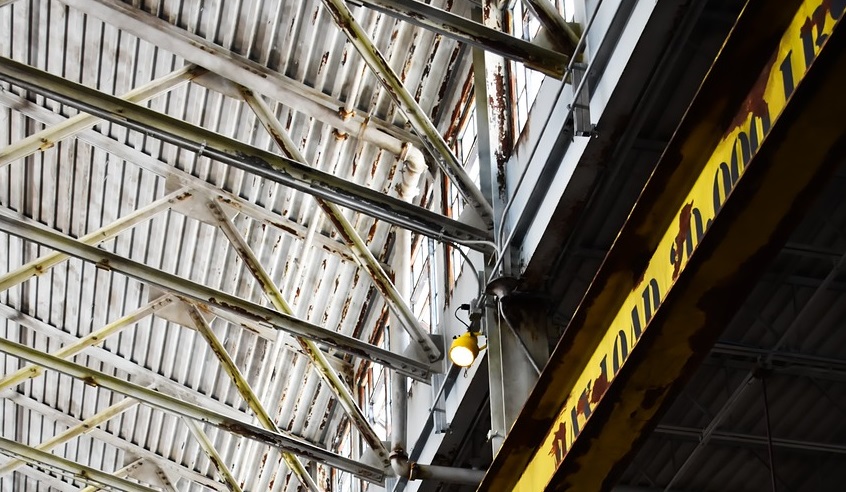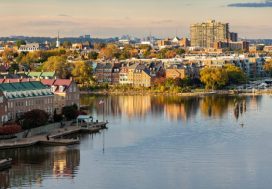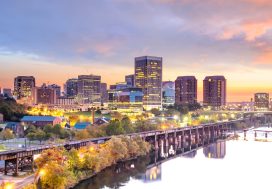Fabric structures are becoming increasingly popular across industries due to their versatility, durability, and cost-effectiveness.
These innovative solutions cater to various industry needs, from boosting operational efficiency to offering unmatched flexibility.
Explore the many advantages of adding a fabric structure to your business and how it can help enhance your commercial real estate.
1. Increases your Business Property’s Value
Adding a fabric structure to your commercial property not only enhances its functionality but also significantly increases its market value.
These structures make your property more attractive to potential buyers or renters by providing additional usable space that is versatile and aesthetically appealing.
2. Can Bring in More Potential Customers
Investing in a fabric structure can significantly enhance customer experience by offering a comfortable and inviting outdoor space.
For instance, restaurants can use these structures to provide shaded seating areas, allowing patrons to enjoy their meals outside in a pleasant environment, even during the hottest parts of the day.
This not only expands the usable dining area but also contributes to a memorable dining experience that can attract more customers.
3. More Cost-Efficient than Doing Renovations
Fabric structures are renowned for being cost-effective with a strong return on investment.
Businesses often experience sizeable savings due to the affordable nature of these buildings as opposed to traditional construction.
4. Made To Last a Long Time
Fabric structures boast remarkable durability. They are built with sturdy steel frames and high-quality tension fabric, designed to withstand wear, high winds, and severe weather, ensuring longevity and reliability.
5. Quick and Easy to Install
The construction industry recognizes fabric structures for their quick and easy installation. These temporary structures can be erected much faster than conventional buildings, substantially reducing construction times.
6. Energy-Efficient Environmental Benefits
Their fabric cover, which allows natural light to penetrate, makes these structures highly energy-efficient, lowering heating and cooling costs. Moreover, the materials used are often recyclable, emphasizing the environmental benefits.
7. Flexible and Versatile
The applicability of fabric structures spans from tents to warehousing, showcasing their flexibility and versatility.
Whether the need is temporary or permanent, these buildings can adapt to various uses and configurations.
8. Maximises the Use of Your Space
Clear-span and wind designs of fabric structures maximize floor space, offering uninterrupted interior areas.
This space maximization increases the overall value and utility of the structure for activities such as storage or events.
9. Provides Safety and Protection for your Customers
Fabric structures provide enhanced safety and protection. They are designed as tension fabric structures and offer effective shielding against moisture and wind.
Steel delivers a better strength-to-weight ratio than wood, concrete, and wind and is resistant to corrosion and rust, preserving the contents.
Considerations for Choosing the Right Fabric Structure
When integrating a fabric structure into their business, decision-makers must evaluate material qualities and the degree of design customization available.
These factors directly impact longevity, functionality, and the structure’s aesthetic appeal.
Material Selection
Fabric
- PVC-coated polyester is widely recognized for its durability and resistance to weather elements. It provides a solid yet flexible canopy and is often the material of choice for fabric structures.
Metal Components
- Steel is typically utilized for the frame due to its robustness and ability to withstand significant loads. It ensures the fabric structure has a stable and secure foundation.
- Steel offers a better strength-to-weight ratio than wood or concrete, which is crucial for permanent and temporary structures.
Customization Options
Design Versatility
- Fabric structures offer considerable flexibility in design, allowing for unique shapes and architectural creativity that are not easily achieved with traditional materials like concrete or wood.
Aesthetic Choices
- The fabric membrane can be selected in various colours and translucency levels, resulting in a distinct appearance that can align with brand identity or specific functional needs.
By carefully examining material selection and customization options, businesses can ensure that their investment in a fabric structure meets both their practical requirements and aesthetic desires.
If you’re still unsure, it would be best to consult commercial structure experts, such as Greenline.
Application of Fabric Structures in Various Industries
Industries and Manufacturing
Companies across various sectors have adopted fabric structures for their flexibility and sustainability.
These buildings, made with metal framing and tensioned fabric, offer high tensile strength, which is essential in manufacturing settings where protection from elements is critical.
Shopping Centers
Fabric structures provide unique benefits for shopping centers.
They can create walkways, outdoor food courts, or shading for displays, improving shopper comfort and the center’s visual appeal.
They are crucial for setting up pop-up shops for seasonal items and boosting foot traffic.
These sturdy structures endure weather and require minimal maintenance, offering a cost-effective solution for retail centers.
Restaurants
Restaurants benefit from fabric structures, providing unique outdoor dining areas shielded from weather. This can attract more customers and expand service space.
Customizable to match the restaurant’s theme, creating an immersive atmosphere. Efficient for heating/cooling, reducing costs.
A cost-effective solution for expanding premises or enhancing customer experience.
Sports Facilities
Athletic programs benefit from fabric structures, which can be quickly erected for seasonal sports or as permanent installations. Their versatility accommodates a wide range of sports, from tennis to swimming.
Event Venues
The adaptability of fabric structures makes them perfect for event spaces. Whether for trade shows, exhibitions, or even concerts, these buildings can be designed to fit specific event requirements, providing shelter with style.
Warehouses
Due to their customizability and scalability, fabric structures are ideal for warehousing needs. They provide clear-span interiors free of columns, maximizing space efficiency and storage capabilities.
Mining and Transport
The rugged nature of mining and transport sectors necessitates durable and portable structures. Fabric structures meet this need, offering reliable shelter that can be moved as operations shift.
Agriculture
The agricultural industry frequently uses fabric buildings for storage and livestock shelter due to their optimal environmental conditions and quick construction times.
In summary, using fabric structures is a strategic decision for businesses valuing swift construction times, durability, and versatility across various applications.
FAQ
This section addresses common inquiries regarding the practicalities and benefits of incorporating fabric structures into business operations.
Each question concentrates on the specific advantages and features that fabric structures offer.
How can fabric structures benefit my business operations?
Fabric structures are renowned for their versatility and adaptability, enabling businesses to respond to evolving space requirements rapidly.
For instance, fabric buildings allow for easy expansion or modifications, which can be crucial for industries experiencing growth or shifts in their space needs.
What makes fabric structures a cost-effective solution for businesses?
Fabric structures save costs by reducing construction times and material expenses compared to traditional buildings.
Businesses can, therefore, capitalize on these cost efficiencies for various uses, from warehouses to retail spaces.
What are the durability and maintenance advantages of fabric structures for commercial use?
Commercially used fabric structures are designed to withstand challenging weather conditions and require minimal maintenance due to their durable materials.
This results in a longer lifespan and lower overall costs for businesses.
How do fabric structures enhance the aesthetic appeal of business facilities?
The sleek and modern design of fabric buildings can significantly boost the visual appeal of commercial facilities.
The translucent membrane of some fabric structures also allows for natural lighting, creating an inviting atmosphere and improving the aesthetic of the workspace.
In what ways do fabric structures contribute to businesses’ energy efficiency?
Fabric structures often incorporate energy-efficient features like natural light optimization and superior insulation properties.
These characteristics help reduce reliance on artificial lighting and climate control systems, leading to lower energy use for businesses.
What are the environmental benefits of choosing fabric structures over traditional construction?
Choosing fabric structures supports environmental stewardship through the use of lightweight and often recycled materials and by causing minimal disruption to the site during construction.
This makes fabric structures a greener option for eco-conscious businesses.





